Ask any muscle car enthusiast about their favorite Chevrolet, and there’s a pretty good chance you’ll hear the name “Chevelle SS” spoken with excitement. It’s a great answer, too, because the Chevelle SS, especially with the 454 cubic inch V8, is practically muscle car royalty, one of GM’s most iconic cars. However, not everyone could afford the Chevelle SS, which got as expensive as $4,800 when it was new. But speed-obsessed Chevy had an option for folks on a budget. Meet the two-year-only Heavy Chevy. When properly equipped, this Chevelle derivative was most of the SS for a lot less money. Despite the allure of cheaper speed, more people went for the fabled SS. Let’s take a look at this rare performance special.
When car enthusiasts are minted as kids, bedroom walls become filled with posters of dream cars, and if that kid is serious enough, they might even work toward owning their favorite poster car after growing up. Unfortunately, life rarely follows the ideal path. Maybe your childhood dream car skyrocketed in price, and adult-you has about the same chance at owning the dream as kid-you did.
I get it; one of my dream cars is an early Audi R8 V10, and despite the fact that these cars have been around since 2009 and I’m making more money than I ever have, I still cannot afford one. Alternatively, maybe an automaker comes out with a car that you really want today, but it’s out of reach. That’s where I am with the Ford F-150 FP700.
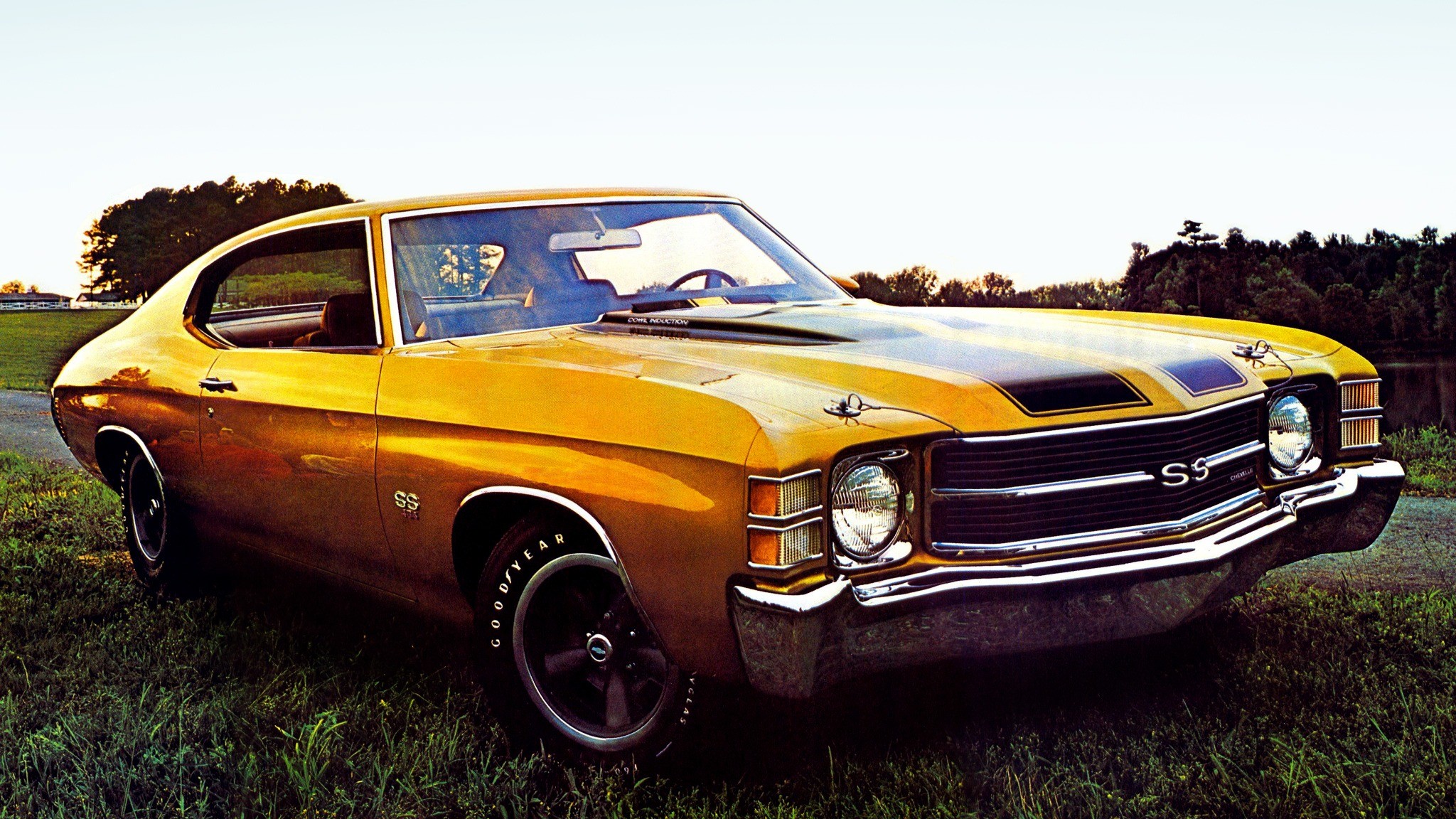
Sadly, the Chevrolet Chevelle SS is one of those classic cars that have only gotten more expensive over time. The peak of the Chevelle, the hot 1970 Chevelle SS with a 454 cubic inch V8 making 450 gross HP, was about $4,800 when it was new, or about $41,021 in 2025. Chevelle SS prices can be all over the place today, but you could reasonably expect to pay over $50,000 for a decent Chevelle SS from your bedroom poster and sometimes over $100,000 if you want a minty example with numbers-matching everything, rare options, and all sorts of documentation.
Back during the muscle car era of the 1960s and early 1970s, automakers knew that not everyone could afford their hyper-fast flagship muscle cars, especially younger car buyers. Automakers have long desired to pump up their sales by driving younger customers into showrooms, but these buyers are a tough demographic to crack. Young folks often want style and performance, but either don’t have the cash to buy a full-fledged muscle car, or they do have the cash, but end up in a BMW showroom instead.
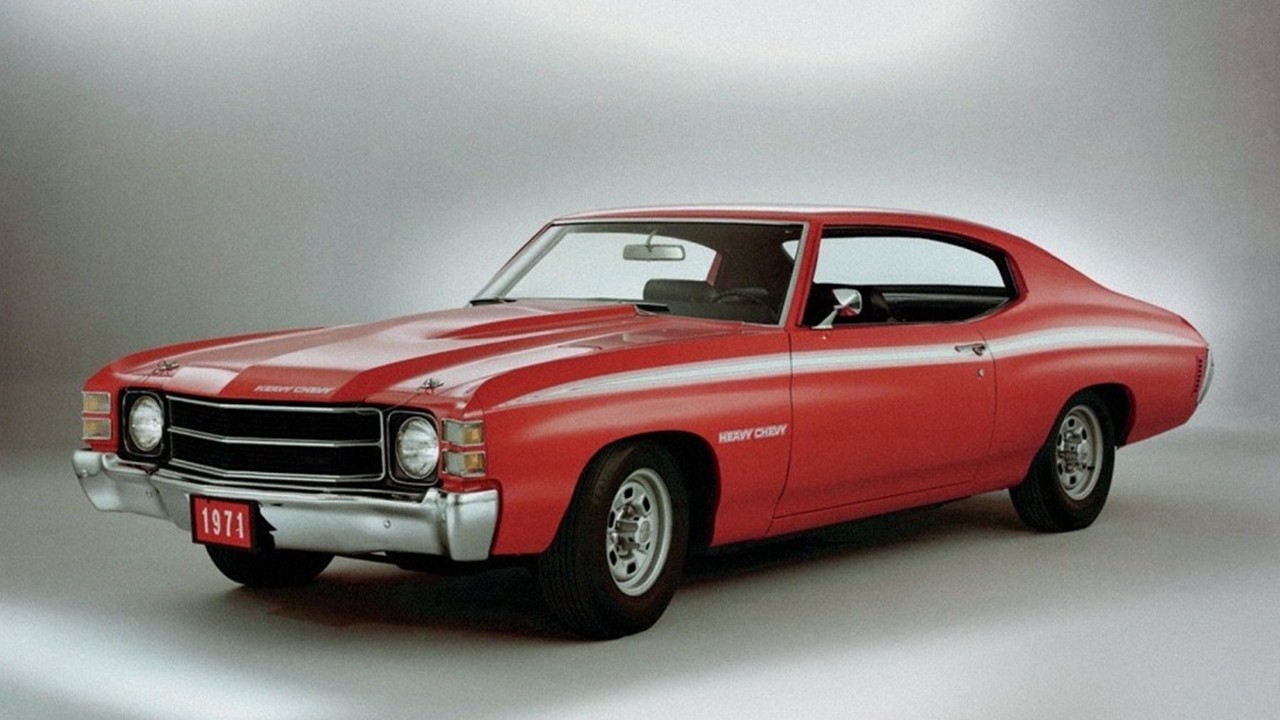
In 1970, Chevrolet had an idea to get young buyers to darken its showrooms. What if it sold a Chevelle with muscle car looks and the option for real muscle car performance, but for a discount price?
Chevy’s Once-Hot Intermediate
According to the book Chevrolet SS by Robert Genat, the 1960s brought on an era where domestic automakers competed to build the best smaller car. In the early 1960s, Chevrolet put the Chevy II up to bat against the Ford Falcon, and the Blue Oval was eating the Bowtie’s lunch. Then in 1962, the Ford Fairlane became a mid-size car, squeezing in between the smaller Falcon and the larger Galaxie. Across town, domestic rivals included Plymouth Belvedere and the later AMC Rambler.
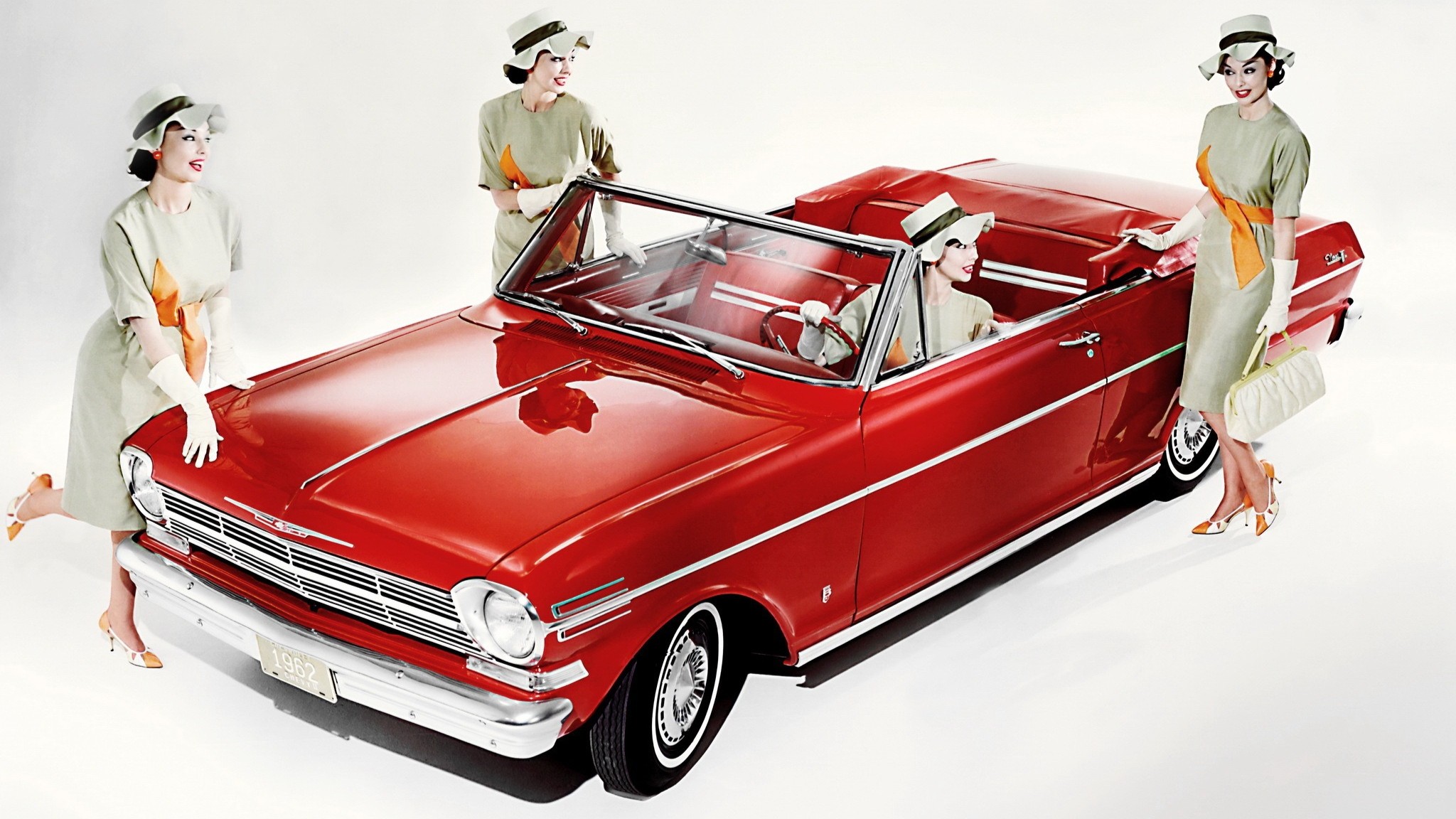
We would call cars like the Fairlane and the later Belvedere “mid-size” today, but back then, they were known as “intermediate” cars. The terms more or less translate to the same thing: a car that is smaller than full-size but larger than a compact. However, it’s notable that there’s not exactly a defined limit for what makes a car an intermediate. As cars have grown throughout time, new mid-size cars have often surpassed the dimensions of the full-size cars of old.
As the Petersen Automotive Museum writes, the birth of the Chevelle wasn’t just to have something to compete in the growing intermediate market. In 1957, The Petersen writes, the Automobile Manufacturers Association had banned manufacturer-backed racing after a string of fatalities. One particularly gruesome crash happened in 1955, when a disaster at the 24 Hours of Le Mans led to the deaths of at least 80 spectators and driver Pierre Levegh. Apparently, General Motors kept racing, anyway. That was until 1962, Chevy Hardcore writes, when pressure from the U.S. government and a threat of antitrust litigation from its competitors convinced GM to drop its racing activity.
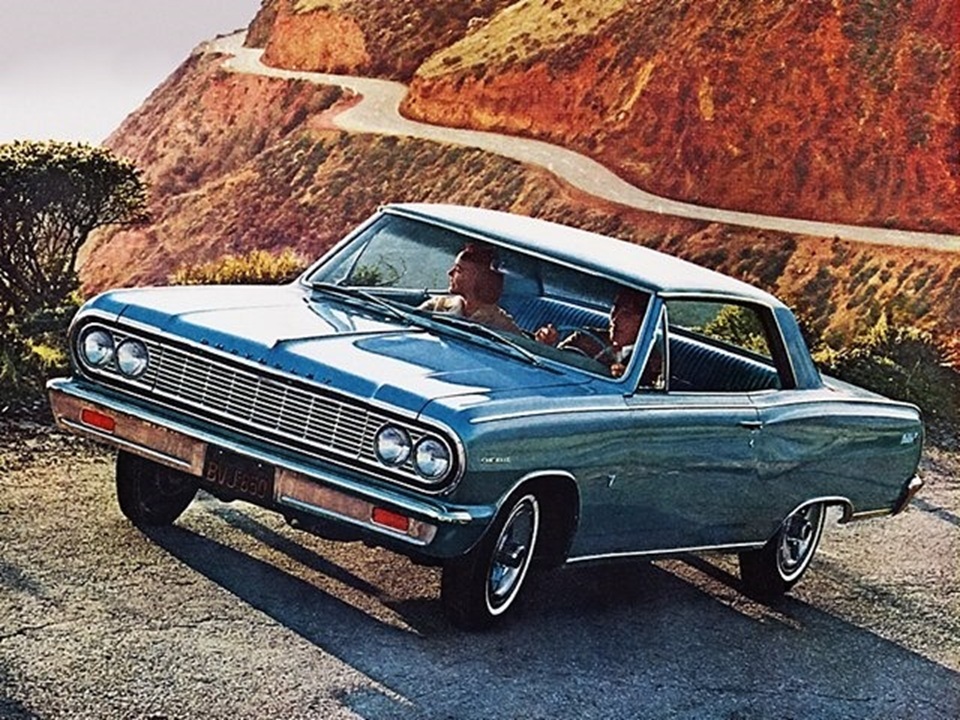
So, how do you sell cars on Monday when you are no longer winning on Sunday? Well, as The Petersen notes, you take the horsepower to the streets and get consumers in high-powered cars. My retrospective on the Chevelle Malibu SS continues about the origins of the Chevelle:
Chevrolet didn’t really have a good match for this expanding intermediate market and cooked up the Chevelle to toss into the ring. It rode on the body-on-frame, rear-wheel-drive A-platform, which slotted in above the Chevy II but under the year’s full-size Impala. Chevy launched the Chevelle in 1963 and in its early days, a Chevelle 300 represented the frugal end of the spectrum while a Malibu was the cushy high-end model. In addition to having both lower and higher-end options, the Chevelle was also available in a wide variety of body styles. You could order your Chevelle as a two-door hardtop, a four-door hardtop, a two-door coupe, a two-door convertible, a two-door sedan, a four-door sedan, a two-door wagon, a four-door wagon, and a coupe utility based on the two-door wagon.
Whew! And yes, the coupe utility in question is none other than the El Camino. For those who wanted a bit more spice in their Chevelles, Chevy offered the Malibu SS. Base Malibu SS models had a 283 cubic inch V8 rated for 195 HP while the top optional V8 was a 327 with 300 HP. In 1965, power rose even further to 350 HP thanks to the 327 cubic inch L79 small-block V8. Chevrolet offered a Chevelle for just about everyone and it’s no surprise that Chevy moved 338,286 units that first year alone. The Chevelle would go on to get a new body in 1966 and a new generation in 1968.
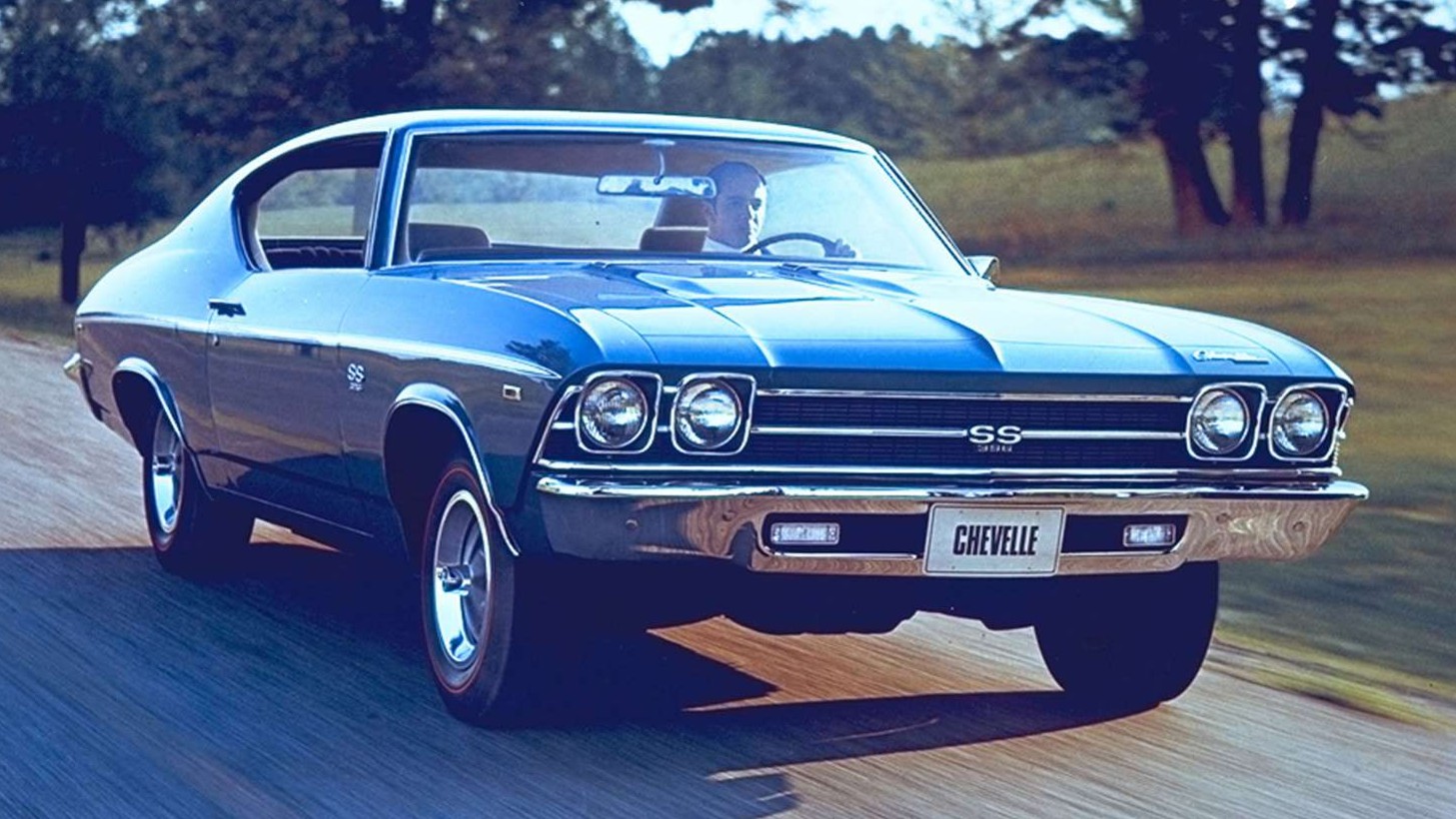
The second-generation Chevelle was another hit out of the park. Chevy shortened the wheelbase and formed the body into the classic long hood, short deck configuration so many love today. That alone would be enticing, but then Chevrolet capped off the vehicle’s now legendary design with voluptuous curves. Couple the design with the firepower under the hood, and you get what many people picture when you say “classic muscle.”
The Chevelle Hits The Gas
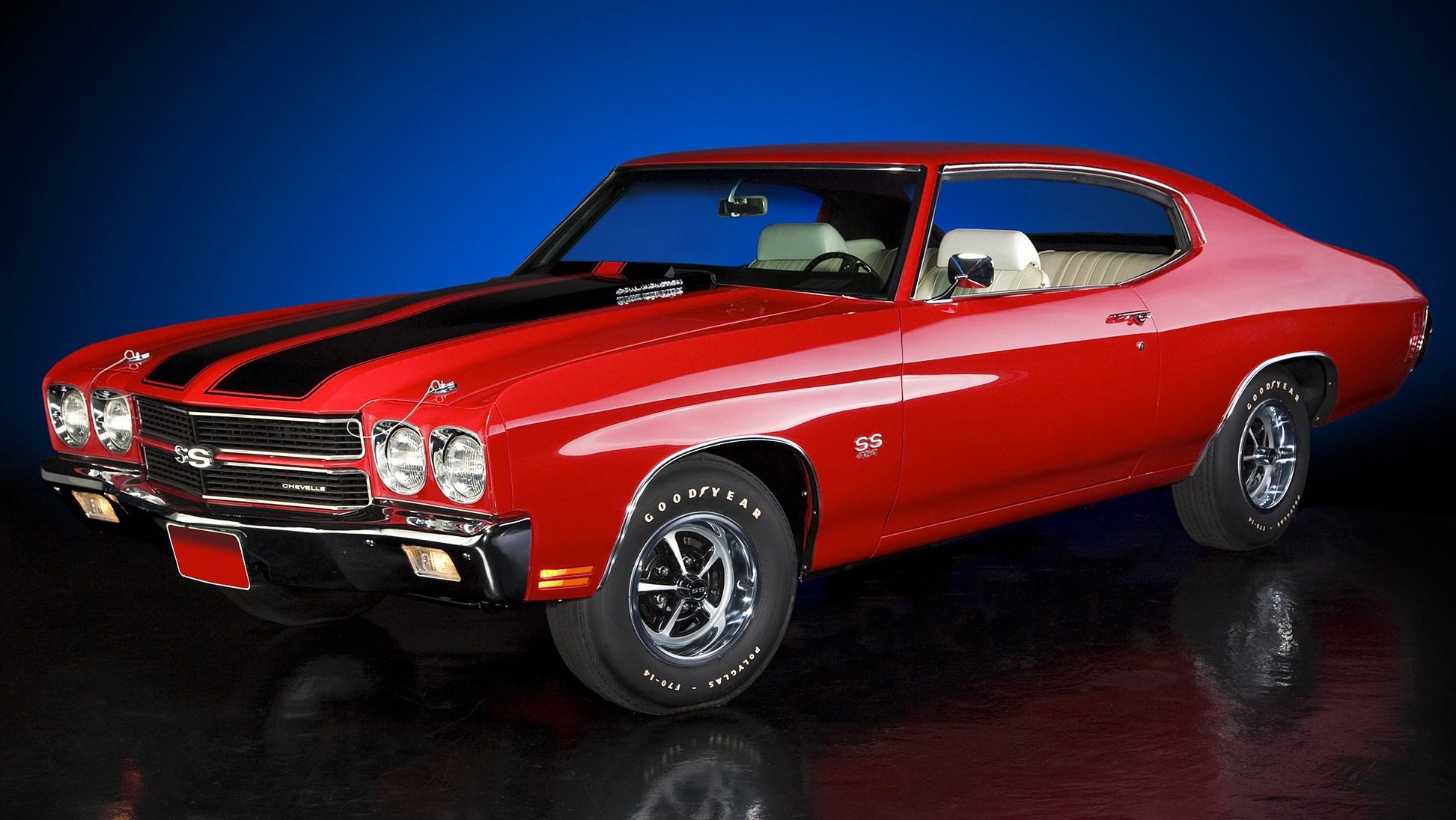
According to The Petersen, the name “Chevelle” is a mashup of Chevrolet and gazelle into a single name. The Chevelle was a star, with the Petersen noting that the vehicle was marketed as “a fine line between sport and pure luxury” and managed to sell 338,286 units in just its first year alone. But there was more in store. Chevrolet General Manager Semon Emil “Bunkie” Knudsen wanted to capture the magic that Pontiac had with its GTO, and the Chevelle was destined to join the muscle car ranks. My story from 2023 continues:
At its peak, you could buy the 1970 Chevrolet Chevelle SS 454. Check equipment group RPO Z15 and your Chevelle SS was locked and loaded with a 454 cubic inch big block V8. The base 454 had an LS5 V8 rated for 360 HP but you were able to opt for the solid lifter and high-compression LS6, which laid down a tire-shredding 450 HP. Of course, we’re talking about sneaky SAE Gross HP there, but the Chevelle SS 454 was the most powerful production Chevelle ever and the only GM vehicle with more power than the same year’s Corvette. Back in 2011, the Chevelle SS took second in a contest to crown the best Chevy vehicle of all time.
[…]
The Chevelle would go on to become one of America’s best-selling cars, and as I said before, eventually spawned one of Chevy’s most beloved cars of all time. How well did the Chevelle sell? In 1968, 464,669 of them found new owners. The Super Sport wasn’t rare either, with 62,785 Chevelle SS 396s going home that year. At the second-generation’s peak, 1970, 489,582 examples went home to customers in the United States.
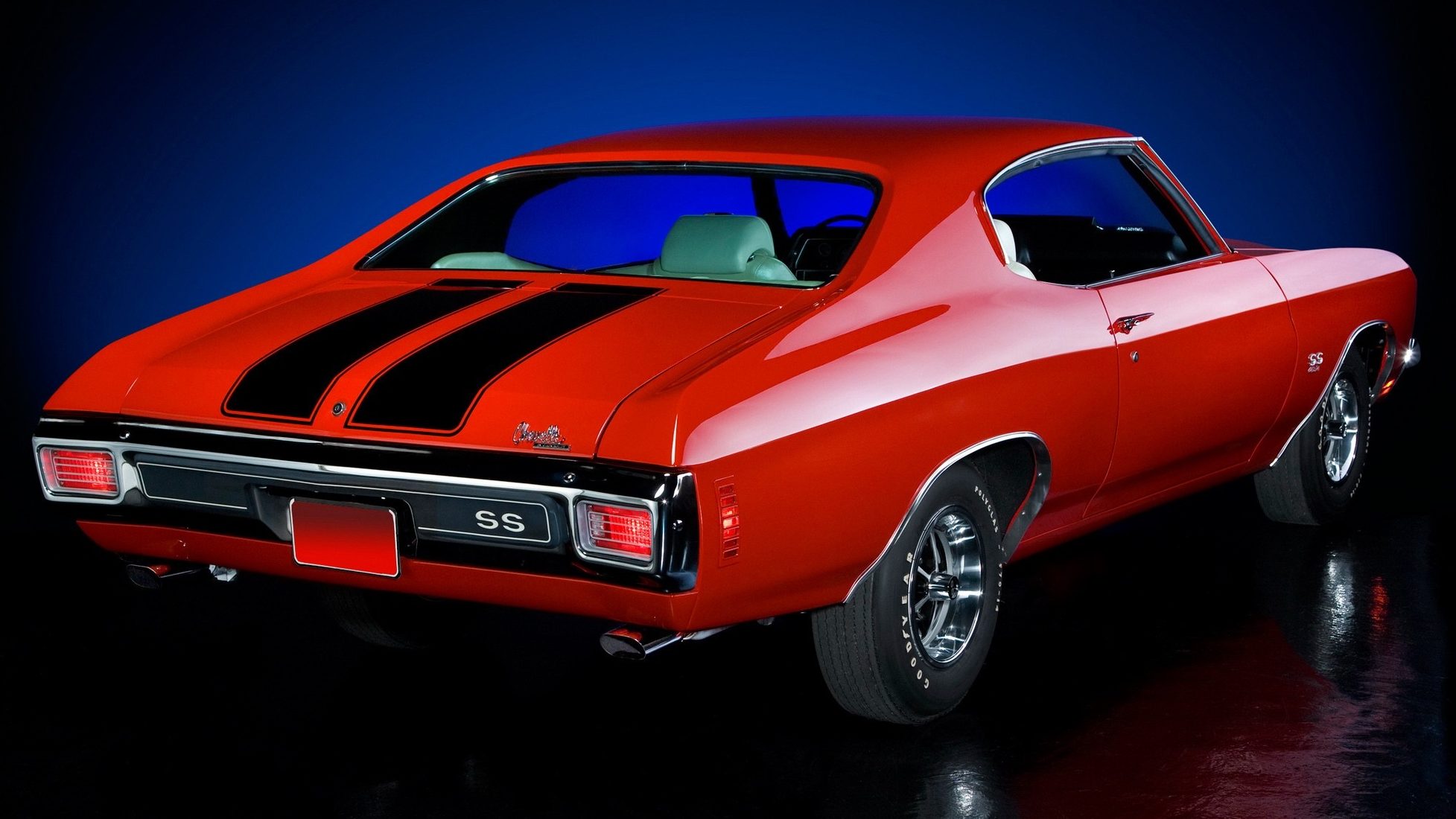
The Chevrolet Chevelle SS 454 handily dispatched the run to 60 mph in under six seconds and could complete a quarter mile in a touch above 13 seconds at speeds faster than 100 mph. That was blisteringly quick for 1970 and would even put some modern cars to shame.
The only problem is what I said before, and it’s that a well-equipped Chevelle SS ran you up to $4,800 or so, which was a decent pile of change back in 1970. Now, if you didn’t need the massive 454 V8, which was limited to just the SS model, you could have gotten a 396 SS for around $3,305, or $28,245 in 2025. If that was too expensive, for just two years, Chevy also offered a discount Chevelle muscle car, sort of.
The Heavy Chevy
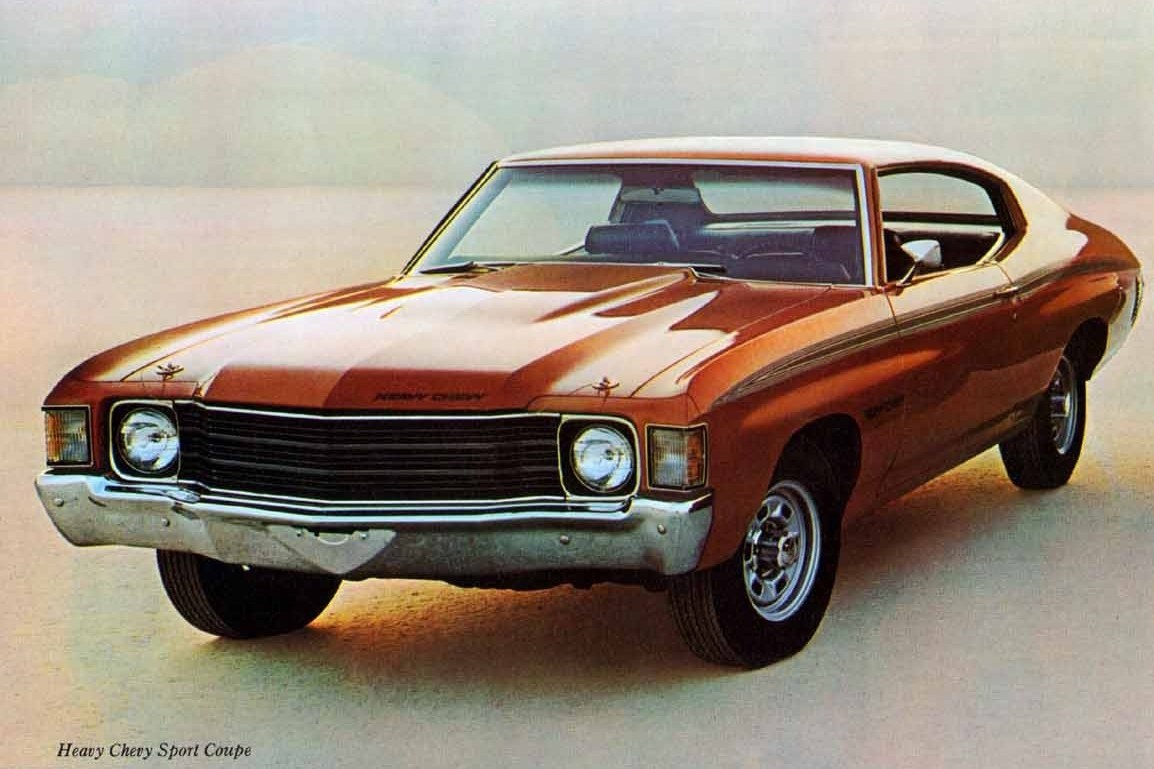
The Chevelle celebrated a spectacular 1970 drunk on both high power and healthy sales, but winds of change were on the horizon. In 1971, Hemmings writes, Chevrolet managed to move around 249,000 Malibus, 80,000 Super Sports, 43,200 Chevelle wagons, 35,600 base Chevelles, and 5,089 Malibu convertibles.
The Chevelle’s fortunes would begin to sour as it was hit by a punch of emissions regulations and a reconfiguration of power numbers. Chevrolet now embraced SAE net ratings for horsepower in addition to lowering compression. An LS5 454 V8 was rated at 365 HP gross, but then reported a net of 285 HP. If you paid attention to only the numbers and not the nuance, you might have been outraged.
As if environmental concerns and a change in ratings weren’t enough of an upheaval, as Mac’s Motor City Garage wrote, the prices of muscle cars were also technically inflated by the high cost to insure them. Suddenly, for many, the muscle car wasn’t as palatable as it had appeared only a couple of years before.
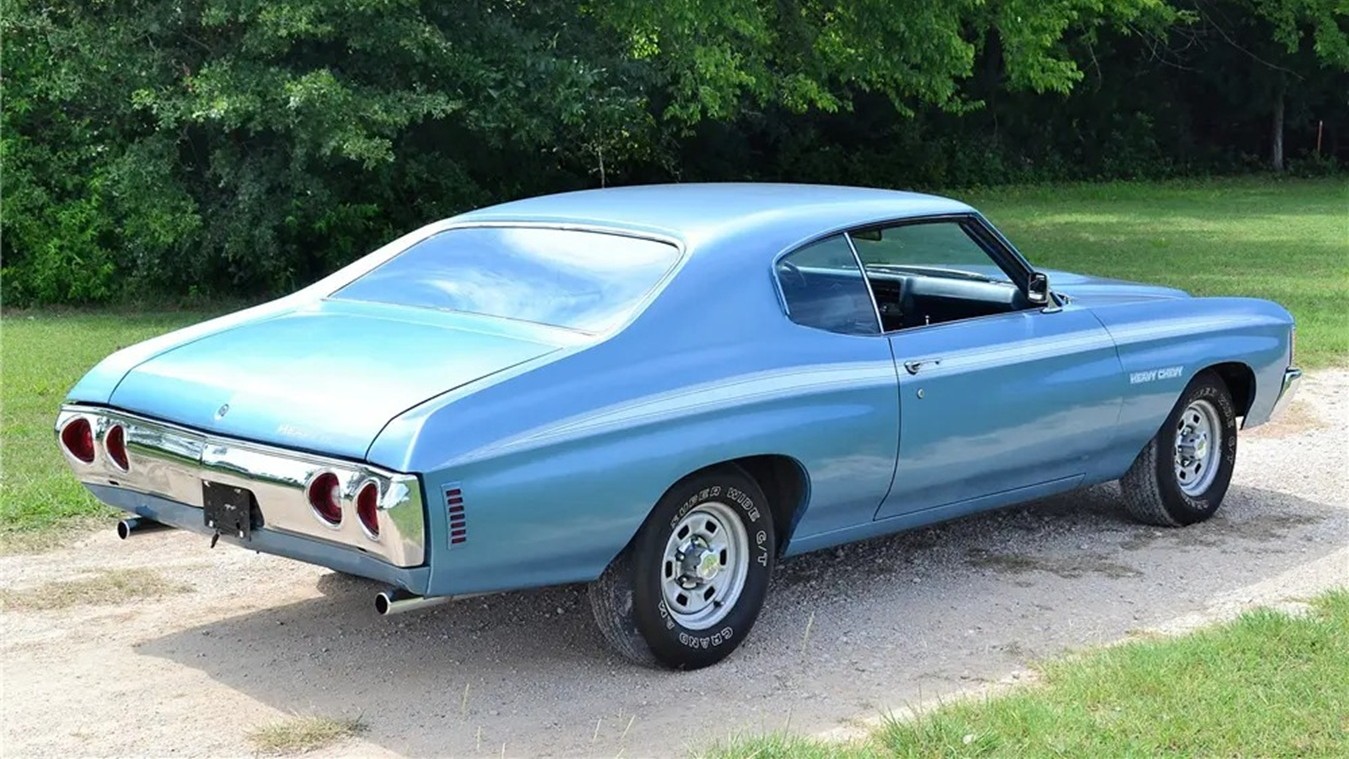
Chevrolet’s solution to all of these problems was to adapt and launch a sporty version of the Chevelle that could be had for less money, the Heavy Chevy, RPO YF3. Introduced in March 1971, the Heavy Chevy offered buyers the chance to at least get a taste of owning a muscle car, but without paying muscle car prices or insurance rates.
In its base form, the Heavy Chevy was purely a cosmetic upgrade to a base model Chevelle Hardtop Coupe. For $142.20 ($1,215 in 2025) over the base price of $2,807 ($23,989 in 2025), you got a domed SS hood with pins, Rally wheels without trim rings, a black grille, black headlight trim rings, stripe decals, and special badging. That’s it.

At least at its core, the Heavy Chevy package gave your standard car the looks of a muscle car. In 1971, the base engine was a Turbo-Fire 307 cubic-inch small-block V8 that fed from a two-barrel carburetor and fired 200 HP, or a whole stable short of a traditional muscle car.
The interior further drove home the point that you were getting a discount car here. The Heavy Chevy’s standard equipment called for rubber floor mats, a cheap bench seat, and very little garnish. That’s compared to the Malibu-based SS, which was marketed as a luxurious sporty car.
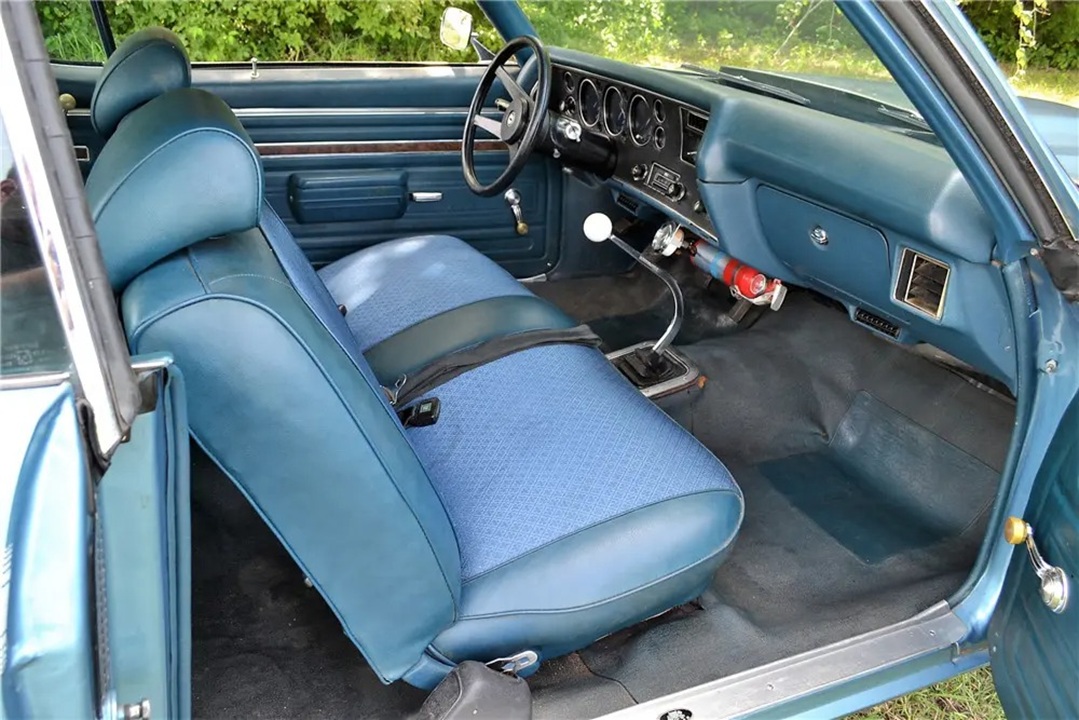
According to Chevy, the Heavy Chevy was “heavy on looks but light on price” and that the package was aimed at men and women who were single and were younger than 25 years of age. Further, Chevy told its dealers: “And they afford you an opportunity to close on those prospects who are looking for a “performance-car” image at an economy car price.”
Chevy pitched upsides to dealers as being a low cost of entry, low insurance costs, and low operating costs since the Heavy Chevy used standard engines. Further, Chevy said that Heavy Chevy buyers would benefit from high resale values. The Heavy Chevy would be sold alongside the Rally Nova, which also featured go-fast looks but cheap equipment.
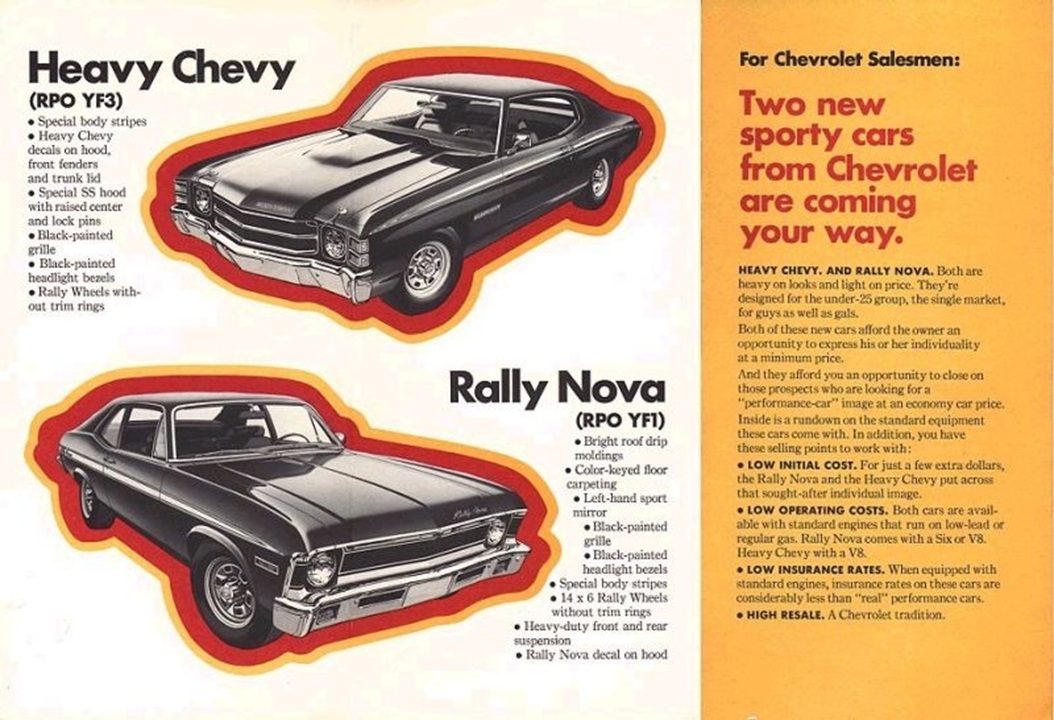
Mac’s Motor City Garage notes that, if you checked just the right boxes, it was possible to make a Heavy Chevy into a real muscle car. A two-barrel Turbo-Fire 350 and a four-barrel Turbo-Fire 350 were available, as was the Turbo-Jet 400, a 402 cubic inch V8. As noted earlier, the 454 was exclusive to the SS, and while the Chevelle was available with a six, it wasn’t available in the Heavy Chevy.
The four V8s were good for 200 HP, 245 HP, 270 HP, and 300 HP, respectively. That Turbo-Jet 400 also came with a Rochester four-barrel carburetor and an 8.5:1 compression ratio. Transmissions included a MC1 three-speed manual, a Muncie M20 four-speed manual, or a Turbo-Hydramatic 400 automatic. The Heavy Chevy was also available with the Chevelle’s other options, including the F41 heavy-duty suspension (which was standard on the SS), a Positraction limited-slip differential, upgraded brakes, upgraded instrumentation, and more.
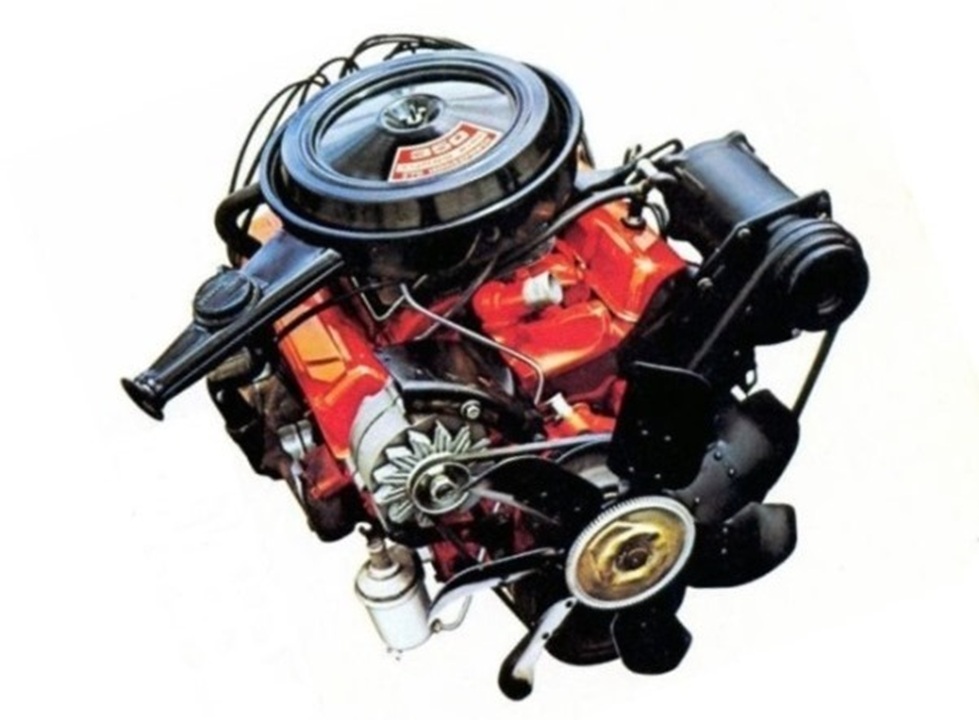
In essence, the Heavy Chevy sort of existed a kind of à la carte SS, where you chose how hard you wanted it to go. Of course, you couldn’t turn a Heavy Chevy into the flagship SS 454, but you were able to make something somewhat close to it for less money.
Rarer Than You’d Think
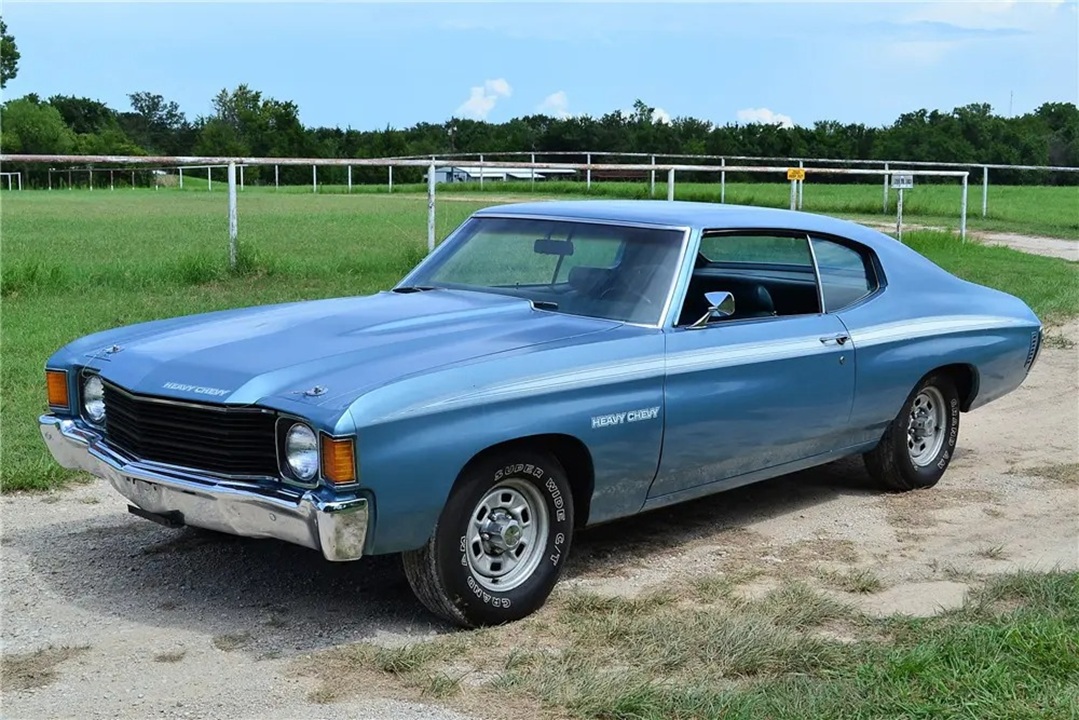
Chevrolet didn’t really intend the Heavy Chevy to be a rare model, but that’s how it worked out. Despite the low cost of entry, most people just bought an SS, anyway. Just 6,727 Heavy Chevy models were built in 1971, with 9,503 more following in 1972. Remember, Chevy sold over 80,000 Chevelle SS units in 1971 alone.
What’s really cool is that the Heavy Chevy hasn’t ascended to muscle car stardom like the SS. That means that, on average, you can find a Heavy Chevy for cheaper than a Chevelle SS. For example, there’s a supposedly numbers-matching and restored Heavy Chevy with a 350 for $46,750.
The coolest part about the Heavy Chevy is just the fact that it existed in the first place. Chevy knew that people wanted the Chevelle SS, but perhaps couldn’t afford one, so you got one of these instead. The sort of formula was repeated with the Pontiac GT-37, the discount GTO. In a way, this strategy is still alive today, as several brands sell cars with the looks of their performance flagships, but for a lower price. If you’re looking for something like a Chevelle SS but don’t have Chevelle SS money, try a Heavy Chevy.

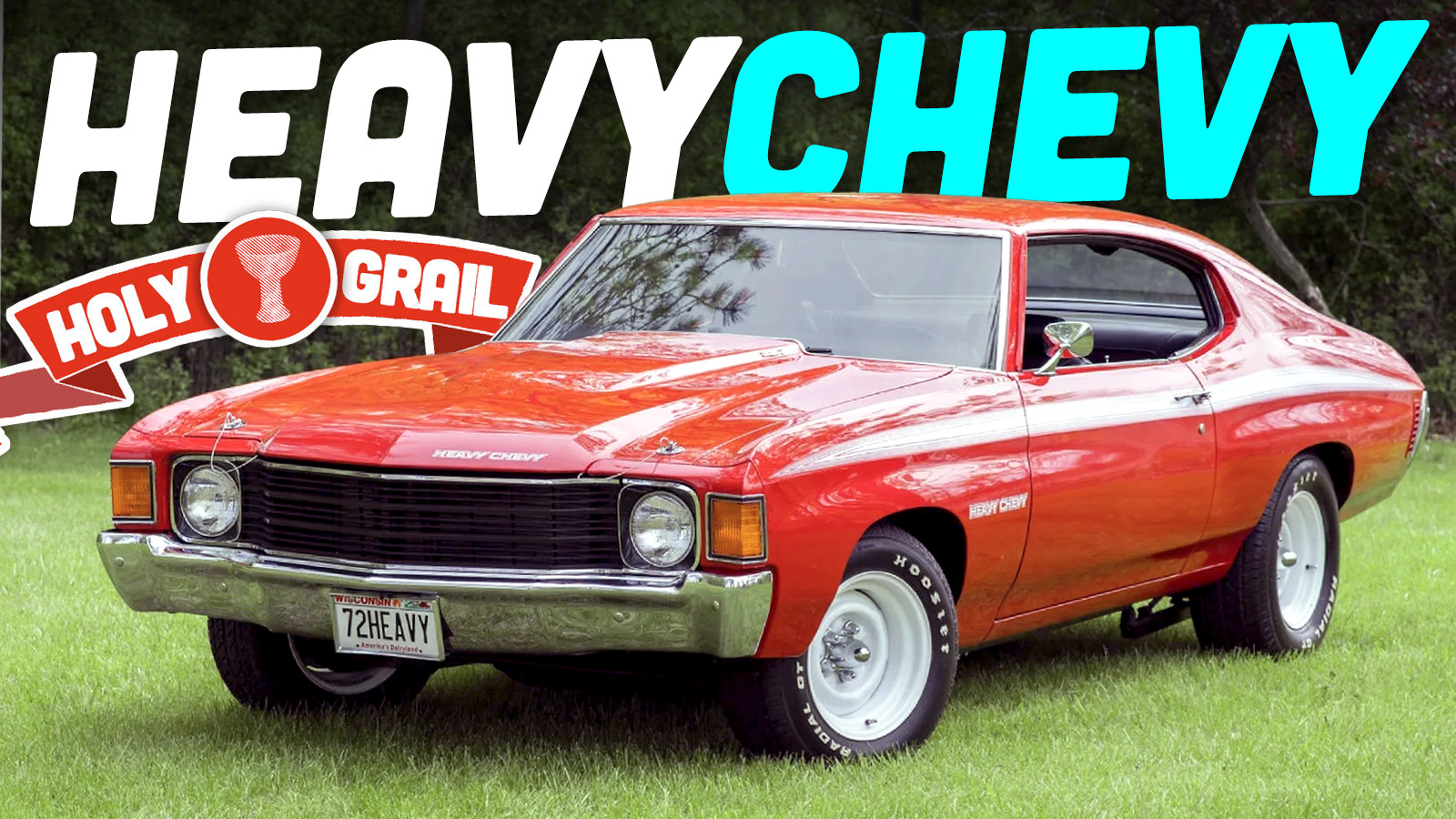







Why can’t they just make a car that looks like this now. I know it wouldn’t be exact, but the shape is timeless.
Side impact crash safety (taller doors necessary) and fuel economy (lower ground clearance = less drag).
But if you’re really determined to sacrifice the fuel economy and you’re okay with a chonky brick of a car, the Dodge Challenger and current Dodge Charger are what this design language looks like on a modern car.
Either that, or you make a crossover “coupe” to get away with higher ground clearance and boxier styling – something like the Bronco Sport, but with a fastback roofline. As much as I love to hate crossovers, I honestly wouldn’t mind it if someone built a crossover that looks like a classic muscle car. They’d probably make it 4-door only, though, like the Toyota Crown or the Mach E.
The other factor of course is pedestrian impact safety, which limits what you can do with the front end styling, but boxy modern crossovers and the aforementioned Challenger have found ways to make it work – you’re just not going to get those beautiful chrome bumpers anymore, sadly, both for crumple zone and environmental reasons.
Basically… we could kinda make cars look similar to this again, but the current hype among consumers is all about SUVs and the off-roady image, so all the boxy styling attention goes to Broncos and such. A two-door muscle-crossover with a fastback roofline, V8, proper ground clearance, tires with real sidewall, and an acceptance that it isn’t going to be a canyon-carving sports car like modern muscle cars became, would be the closest we could get to what classic muscle cars were today, but it might just be too niche for manufacturers to consider building right now. That, and enthusiasts would complain about another legacy nameplate being stuck on a crossover, even if that crossover is more similar to the original car than an actual modern car would be.
My 2022 Golf passed side impact crashes and all other safety tests, gets great fuel economy and has normal full size windows unlike others that have slits for windows
I’m not talking about window size here, I’m talking about high beltlines relative to the lowest part of the car. Modern cars, crossover or not, have tall sides for the sake of side impact safety, your 2022 Golf included. Classic cars are much slimmer by comparison, which is part of why they look so good proportionally, and that’s what I’m getting at here.
Your Golf also looks like a modern VW Golf, it’s not trying to look like a classic American car, which is the point of my comment – why modern cars can’t look like 60s cars, but also how modern cars COULD theoretically get away with looking more like 60s cars.
Mercedes – the Oldsmobile Rallye 350 is an even better Junior Supercar, as it has a ram air 350 4bbl and F41 suspension, 3.23 gears, spoiler, and cool stripe package for even less. They could be had for less than $3200. Take a look at them!
Years ago, a friend got a 71 Chevy that was sort of a barn find. He knew a widow who’s husband had a 71 Chevelle in light blue with the 350 2 barrel in the garage that she didn’t drive. Had <30k miles on it around 1991. My friend bought it, put new tires on it, changed the fluids and belts and drove it off to see me.
It was a shockingly good vehicle. It road well, handled flat and would spin the tires off idle regularly (he was cheap with his tire choices). The only bad thing was the brakes. It still had the original shoes on all 4 corners. AND, they didn’t have power brakes. Stopping was an exercise in planning and if you did a stop from 50+ mph, you had to put the car in park to keep it from driving off at a red light.
With better brakes, this car was better than any new late 80s cars I had driven. The fuel economy actually wasn’t bad either. GM was a different world of good back then and then they fell a LONG long way.
I understand that Oldsmobile came up with it’s “Ram Rod” 350 olds engine offered in the Cutlass for the 1969 year model to fill the same niche during the muscle car era.
I saw a black stripe on dark red Chevelle like the one pictured on the I80 in the Sacramento area last Saturday in gorgeous condition. Yum.
I appreciate the conversion to today’s dollars. So many people talk about how “cheap” cars were back in the day, but they really weren’t when you factor in inflation.
The equivalent of 1,200 bucks for a hood and some rally wheels seems like a terrible value, no wonder why people just ponied up for the SS. I bet by the time you add in the 400 V8, you’re close to SS money anyway.
THESE really are the good old days: You could order your Chevelle as a two-door hardtop, a four-door hardtop, a two-door coupe, a two-door convertible, a two-door sedan, a four-door sedan, a two-door wagon, a four-door wagon, and a coupe utility based on the two-door wagon.
And it was available in 15 colors. Including black, white, silver and gray.
Wow, this hits close to home!
I grew up around my father’s ’72 Chevelle Heavy Chevy – with the original 402 big block! He has investigated these cars more than anyone I know, down to nearly every piece of original literature, advertising, and factory correct-ness.
As mentioned, these were unique cars as they were based off the base model Chevelle, not the Malibu. Because of this they couldn’t be optioned with carpet, bucket seats, or some other “higher-end” options. What’s also trivial is that you can’t verify an original Heavy Chevy from anything other than the build sheet from the assembly line or the window sticker. Otherwise it could just be a base model Chevelle with the decals. In the past 50 years so many cars have been cloned into SS models that it makes these even more unique.
My father has been into ’71/’72 Chevelles since he bought his first back in ’77 (the blue convertible in the background of the linked picture). It took him years and years to find a documented ’72 Heavy Chevy with a big block to restore, he finished the nut and bolt resto himself a few years back!
That front end, with its particular trim and graphic, reminds me of a mid-70s Holden Monaro.
Personally I would rather have the Nova rally sport with the 350 4 barrel but I had a 68 chevelle and it was a good car it just didn’t suit me I gave it to a friend who still owns it today it was a base model with a 327 2 barrel three speed
Nova means No Go in Spanish.
but https://www.snopes.com/fact-check/chevrolet-nova-name-spanish/
If you put the space in there, sure. But no native spanish speaker looks at that and thinks, “Oh, this car’s name means ‘doesn’t go’ “
It was a common joke (Urban Legend with regard to sales), long before memes were even a thing.
Today it would be called an SS-line
Lookin’ at you, sad little Fiesta ST-Line. Take your fancy wheels and go home.
Tiguan R-line too
This article makes me sad because a few weeks ago our 1969 Chevelle SS drove away for the last time.
fun LS6 chevelle fact- the 4 speed ones had a habit of jamming the shift forks because of the transmission being forced against the trans tunnel due to the torque.
Can confirm this is true for Camaro’s too. Had to use an engine plate to keep the things from hitting the steering shaft as well in my 68 camaro.